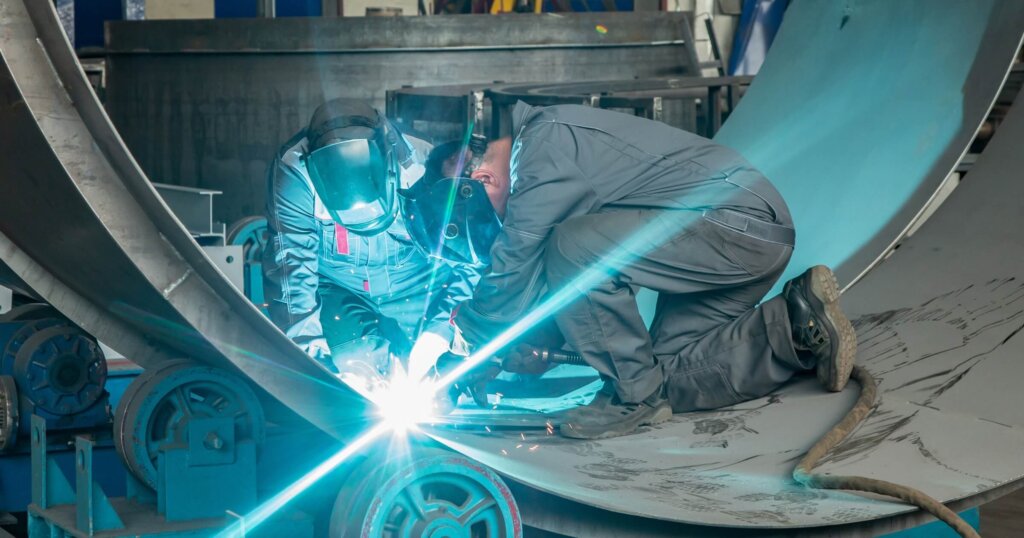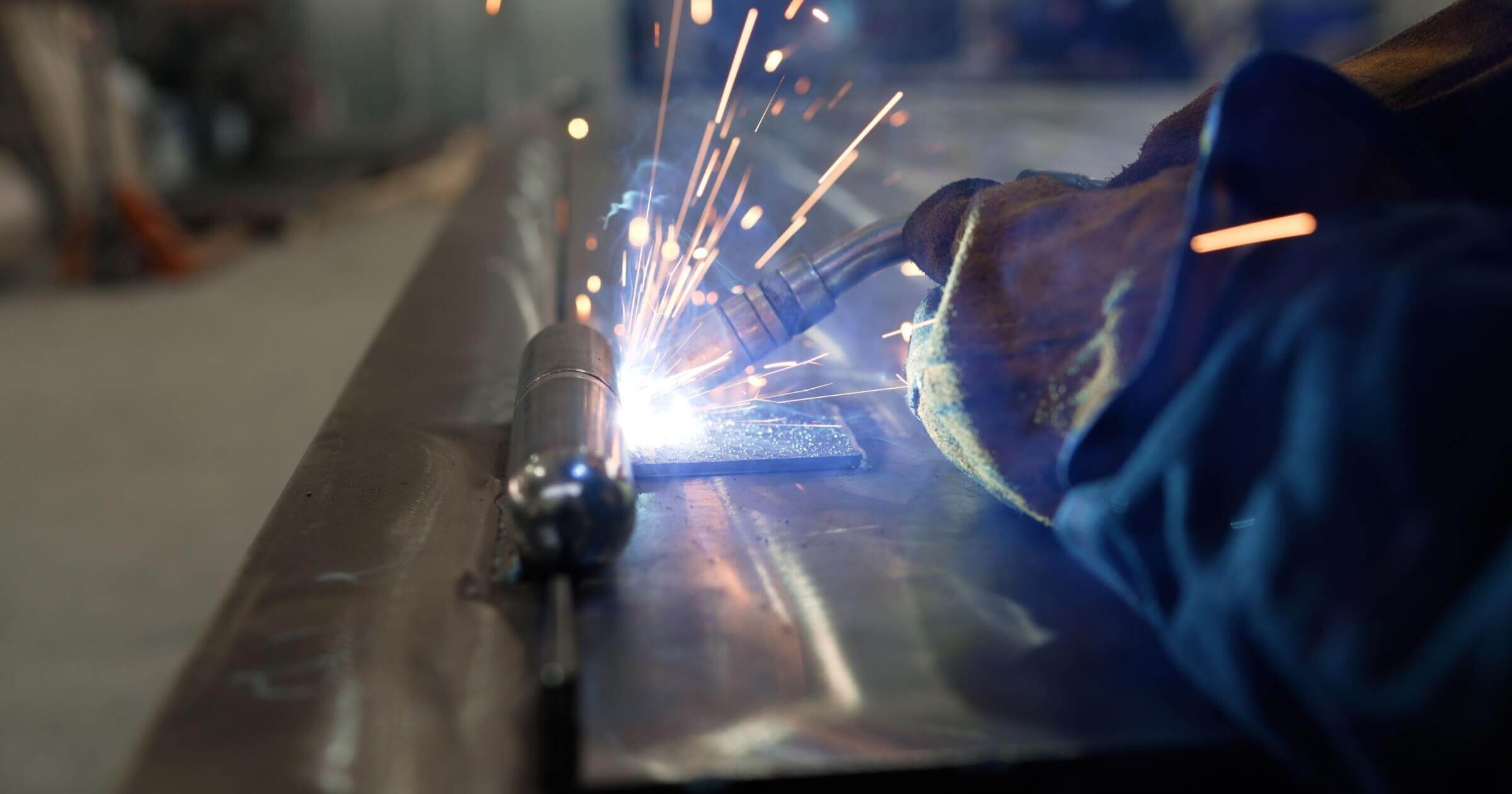Welding is a solid career choice if you like hands-on work, don’t mind a little heat in your work environment, and want a job that pays well without requiring a four-year degree. This guide outlines what you need to know to get started as a welder covering everything from training duration, certification costs, and what you can expect to earn in the field. Whether fresh out of high school or looking for a new career path, here’s a clear, practical roadmap on how to become a welder in the US.
How long does it take to become a welder?
The time it takes to become a welder depends on how you train. There are three main routes:
- Certificate or diploma programs – Vocational schools or community colleges offer short-term welding training programs that take 7 to 12 months and give you a welder certification, giving you enough skills to land an entry-level job.
- Associate degree programs – These formal training programs last about 18 to 24 months, and their welding courses go deeper into theory, blueprint reading, welding processes, metallurgy, metal parts, and welding math. You’ll get hands-on practice and walk out with a degree.
- Apprenticeships – Often organized through unions or employers, these combine classroom learning with paid hands-on training, giving you work experience while you learn. They usually last 3 to 4 years and allow you to count your job training hours towards your journeyman status.
How much does it cost to become a welder?
Welding is a relatively affordable trade to get into compared to other careers, but you’ll still need to invest in training and tools. Here’s a general cost breakdown for the different types of training:
- Trade school or community college certificate: $3,000–$10,000
- Associate degree: $6,000–$15,000 (in-state tuition)
- Safety gear and tools: $500–$1,500 (helmet, gloves, boots, jacket, hood, etc.)
- AWS certification tests: $100–$300 per test (you may need multiple)
- Apprenticeships: Often free or very low-cost; many include paid work and employer-covered instruction
Your total investment could be anywhere from $4,000 to $18,000, depending on your chosen path. The good news? Financial aid, scholarships, and veteran benefits are often available. Some employers even reimburse training costs if you stay with them for a specific period.
5 steps to become a welder in the US

Photo courtesy of Shutterstock.
Step 1 – Get your high school diploma or GED
The first step is getting your high school diploma or equivalent to get into most welding programs. If you struggled with math or shop class in school, that’s okay, but brushing up on basic geometry, fractions, and measurement will help. You’ll need to understand angles which means these basic measurements need to be honed in.
Step 2 – Research and choose your training path
Not all programs are created equal. Look into:
- AWS-accredited schools: These programs are approved by the American Welding Society and follow strict national standards, which means employers can trust the quality of training. They often focus on hands-on skill development and prepare students specifically for AWS certification tests.
- Local community colleges: Community colleges offer affordable, well-rounded training combining necessary skills and general education. They’re ideal if you want a two-year associate degree or plan to transfer into engineering or management roles later on.
- Union or employer-sponsored apprenticeships: Apprenticeships let you earn while you learn, allowing you to gain hands-on experience with classroom instruction at little or no cost. They often take longer but offer strong wages, benefits, and a direct path to journeyman status.
- Manufacturer training programs (like Lincoln Electric or Hobart Institute): Welding equipment companies run these programs and are highly focused on practical skills using the latest tools and techniques. They’re intensive, fast-paced, and often attract students aiming for specialized or high-performance welding roles.
Before making a decision on your training path, ask questions about tuition, job placement rates, class sizes, and what types of welding they cover (MIG, TIG, Stick, Flux Core). If you want fast entry, a certificate program may get you hired sooner. For those planning to stay in the trade long-term, apprenticeships offer better long-term pay and benefits.
Step 3 – Enroll and complete your training
Training usually includes both hands-on practice and classroom instruction. You’ll learn:
- MIG (GMAW), TIG (GTAW), Stick (SMAW), and Flux-Cored Arc Welding (FCAW)
- Blueprint reading and weld symbols
- OSHA safety rules
- Metallurgy (how metals behave when heated and fused)
- Cutting and grinding techniques
Expect to spend several hours a day at the bench perfecting your technique, because when it comes to welding, practice is everything. Some programs also offer resume help or connections to local employers after graduation.
Step 4 – Get AWS-certified
Once you’ve finished school, the next step is to take your AWS Certified Welder test. The AWS (American Welding Society) is the main certifying body in the U.S., and its tests are based on real-world performance.
Here’s what that looks like:
- A visual inspection of your weld
- A bend test or destructive test, where your weld is physically tested
- A practical test using specific positions and materials (e.g., overhead stick weld on 3G plate)
You can be certified in multiple processes (MIG, TIG, pipe welding, etc.), which opens up more job opportunities. Certifications must be renewed periodically—typically every 6 months to a year, depending on your employer or union.
Step 5 – Get your first welding job
You don’t need to be an expert to get started. Most entry-level welders begin in:
- Manufacturing and metal fabrication shops
- Maintenance roles at plants or facilities
- Construction (residential or commercial)
- Shipbuilding or railroad yards
Depending on location and skill level, these jobs pay anywhere from $17 to $22 an hour to start. Showing up on time, working clean, and learning fast is the best way to increase your wage over time.
Salary expectations for welders

Photo courtesy of Shutterstock.
According to the Bureau of Labor Statistics, the average salary for full-time welders, cutters, solderers, and brazers is $47,540 or $22.86 per hour.
Here’s what to expect, depending on the type of welding you’re doing:
- Entry-level position: $35,000–$40,000/year
- Certified pipe welders: $60,000–$75,000/year
- Underwater welders or contract welders: $80,000–$100,000+
- Union or government work: Strong pay and benefits, especially in states like California, Alaska, and Washington
In the welding industry, some employers offer overtime, shift differential, and per diem for travel. It’s common for welders on shutdowns or big projects to work 60+ hour weeks, which can add up fast.
What industries hire welders?
Welders are needed in nearly every part of the economy, offering various career opportunities within various industries. Major industries include:
- Construction: Commercial and industrial building, bridges, high-rises
- Manufacturing: Auto plants, equipment assembly, metal goods
- Shipbuilding: Naval and private marine construction
- Oil and gas: Pipelines, refineries, offshore rigs, gas welding
- Utilities and energy: Power plants, wind farms, solar installations
- Railroad and transportation: Locomotive and freight repair
The welding field is expected to see 49,000 job openings annually due to retirements and new demand. If you’re willing to travel or relocate, you’ll have even more opportunities.
Is welding a promising career?
For people who like hands-on work and skill mastery, welding offers stability. It’s a trade in high demand, with infrastructure, construction, manufacturing, and defense opportunities. General U.S. employers are budgeting about 3.5% wage increases across welding jobs for 2025 potentially earning between $60,000 to %70,000 per year. It’s a great career for those who want to avoid student debt, but still develop a high-income skill.
You can build a rewarding career in just a year or two with the proper training, tools, and certifications. Whether you’re aiming for union work, high-paying specialty roles, or a small fabrication business of your own, welding offers real opportunities and job security.
Want to learn more about welding and other trade careers? Check out our guides to:
- Best welding apprenticeship programs
- Top trade apprenticeships in construction
- Top trade schools for construction
If you don’t want to miss our latest jobsite tips and industry news, sign up to our newsletter to get them delivered straight to your inbox.



